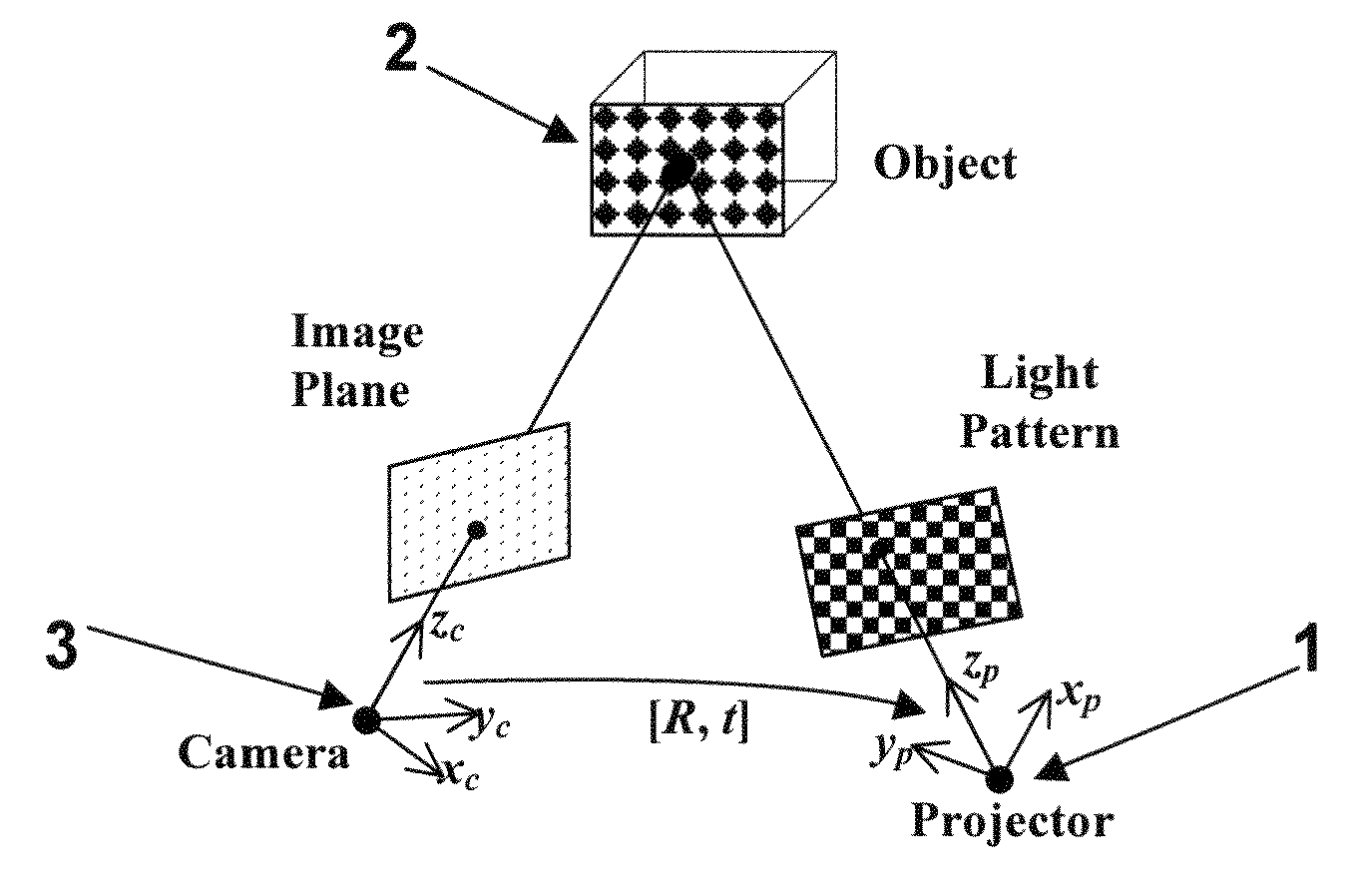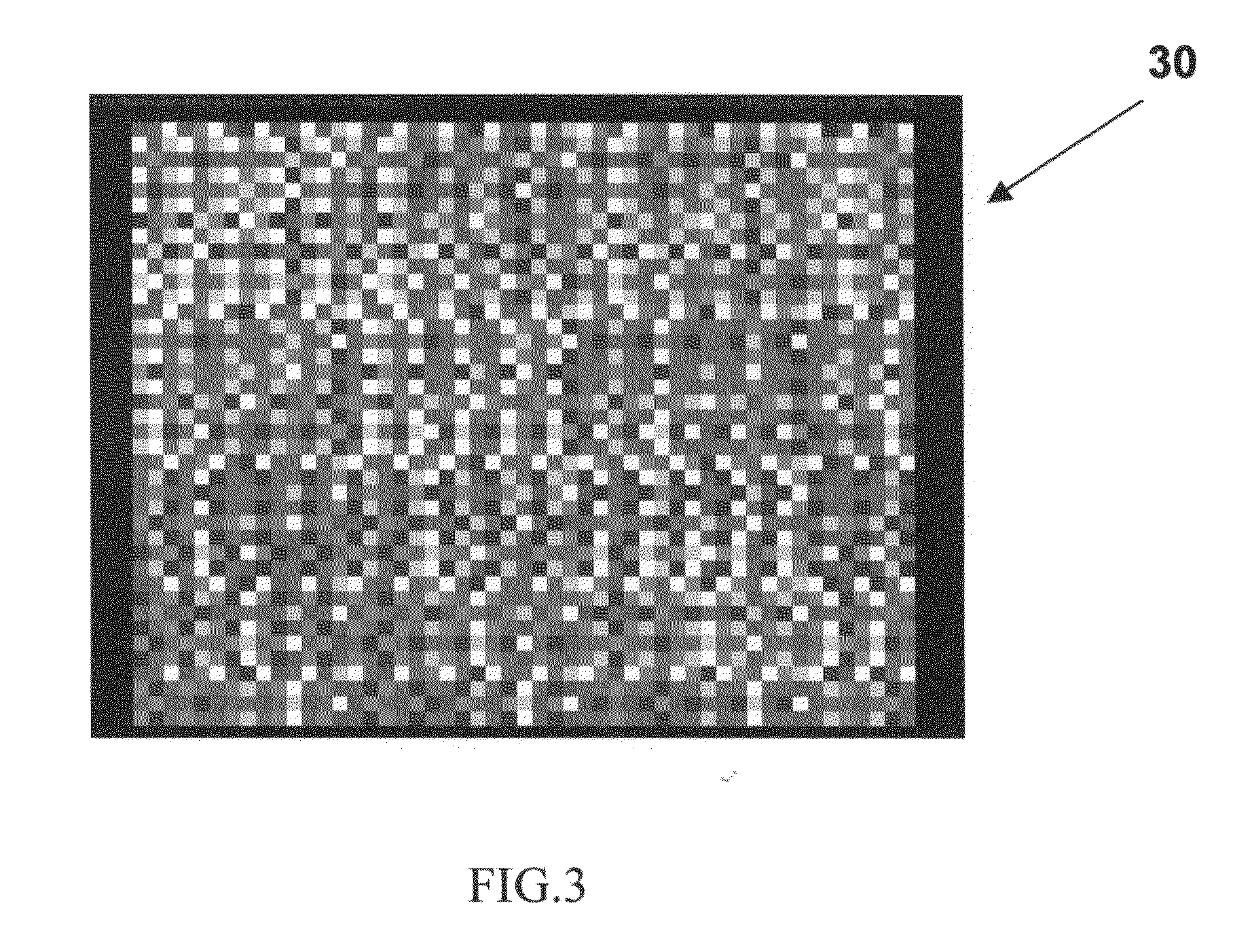Auto-calibration method for a projector-camera system
a technology of projector camera and automatic calibration, which is applied in the direction of image analysis, instruments, computing, etc., can solve the problems of traditional calibration methods such as the eight-point algorithm and the five-point algorithm failing or giving poor performance in planar or near-planar environments, and achieve the effect of improving the quality of the results
- Summary
- Abstract
- Description
- Claims
- Application Information
AI Technical Summary
Benefits of technology
Problems solved by technology
Method used
Image
Examples
Embodiment Construction
[0024]FIG. 1 shows the geometrical relationships in a structured vision system comprising a projector 1, an object 2 and a camera 3. The projector 1 is controlled by a computer and projects a light pattern onto the object. The surface of the object 2 will distort the light pattern and these distortions are captured by the camera 3 and used for calibration of the system and then reconstruction of the scene.
[0025]For the camera and projector a right-handed coordinate system is defined with the origin of the coordinate system being at the optical centers of the camera and projector respectively. Let R and t be the rotation matrix and translation vector from the camera to the projector, and the world coordinate system coincides with the camera coordinate system. The projector may be regarded as a pseudo camera and the camera is of a pinhole type. With these conditions the intrinsic parameters of the projector and camera can be given by the following matrices:
Kp=[fu′s′u0′0fv′v0′001](1)Kc...
PUM
 Login to View More
Login to View More Abstract
Description
Claims
Application Information
 Login to View More
Login to View More - R&D
- Intellectual Property
- Life Sciences
- Materials
- Tech Scout
- Unparalleled Data Quality
- Higher Quality Content
- 60% Fewer Hallucinations
Browse by: Latest US Patents, China's latest patents, Technical Efficacy Thesaurus, Application Domain, Technology Topic, Popular Technical Reports.
© 2025 PatSnap. All rights reserved.Legal|Privacy policy|Modern Slavery Act Transparency Statement|Sitemap|About US| Contact US: help@patsnap.com



